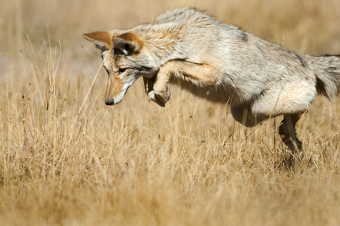
A string of sightings of coyotes and one conflict situation in the town north of Toronto prompted the news article. But the first two sentences in the article is what made the news pop out to us:
“Recent coywolf sightings in Georgina have prompted calls for caution. But they haven’t triggered howls for control measures such as bounties or culls, which the Ministry of Natural Resources and Forestry says are not effective methods of dealing with coyote populations.”
Though numerous residents spouted some misinformation – such as eastern coyotes having a lack of fear or are more dangerous than wolves – the MNR stayed true to facts.
“On rural landscapes, common within Georgina, most residents understand that coyotes are just part of the landscape – and accept that to help reduce conflicts, they need to keep their pets on a leash, not leave food for them outside and so on,” said MNR spokesperson Jolanta Kowalski.
Why is this so shocking for us? It’s been a tradition of MNR to refer people with a coyote “problem” to a local trapper. In attempts to pursue non-lethal solutions, official representatives often avoid discussing hazing, proximity tolerance through feeding, or that bounties and culls actually increase the problem.
We have long advocated for better information and scientifically-founded solutions as mentioned in our Living With Wildlife section. Along with groups like Coyote Watch Canada and the Stanley Park Ecology Society, we’ve pushed for reform.
We can’t say if this is the beginning of a culture shift for Ontario MNR, or simply a blip in the radar. But we will remain hopeful. And we will continue to speak for the animals.
Our advocacy work, campaigning and programs like Living With Wildlife are only possible thanks to the generous donations of our members. Become a monthly donor for as little as $5/month and help us protect fur-bearing animals today.

